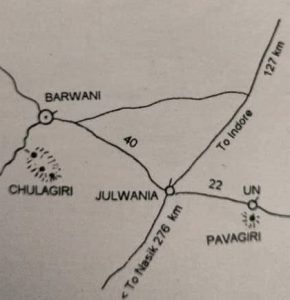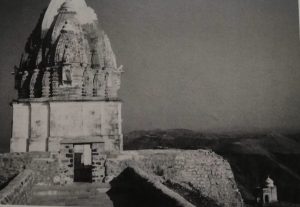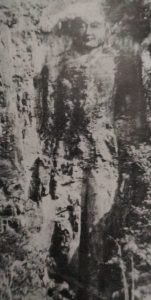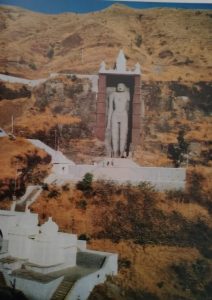Chulagiri
The most sacred and highest peak (altitude 641 m) of Chalagiri, also called Bhawangaja, is crowned by a compact temple (above) in which every available space along the inner walls is oc- cupied by Jina images, free-standing and in high relief. Hard- ly a day passes without family groups of pilgrims, after pay- ing homage to the 25.6 m high rock-cut statue of Adinatha (opposite page), ascending the numerous flights of steps that take them up to this temple raised on a high plinth.
compact temple (above) in which every available space along the inner walls is oc- cupied by Jina images, free-standing and in high relief. Hard- ly a day passes without family groups of pilgrims, after pay- ing homage to the 25.6 m high rock-cut statue of Adinatha (opposite page), ascending the numerous flights of steps that take them up to this temple raised on a high plinth.
 Once there, an all-around grandiose view opens up for them. The centre of worship in this temple are not, however, the Jinas but a pair of footprints, carved from black stone and flanked by two smaller ones, in the inner sanctum. According to a Digambara legend, it was here that Kumbhakarna, the brother of Ravana (consult the story of Rama and Sita) and his son Indrajit attained salvation after they had accepted the teaching of the Tirthankaras and renounced violence.
Once there, an all-around grandiose view opens up for them. The centre of worship in this temple are not, however, the Jinas but a pair of footprints, carved from black stone and flanked by two smaller ones, in the inner sanctum. According to a Digambara legend, it was here that Kumbhakarna, the brother of Ravana (consult the story of Rama and Sita) and his son Indrajit attained salvation after they had accepted the teaching of the Tirthankaras and renounced violence.
Chulagiri and Un.
When and by whom this giant representation of the first Tirthankara was hewn into the rather porous rock-face is not known. The average pilgrim is likely to tell you that it has been there for two thousand years and longer.
A more probable date is the 10th/11th century AD. The first record of repair work on the statue, carried out at the instance of a Digambara Bhattaraka, bears the date 1503. llustration 189 shows the image prior to a thorough restoration in 1922.
 Due to the use of inferior material and the poor condition of the rock, the work had to be done again in 1989/90. In January 1991 thousands of pilgrims gathered at this little known holy site to participate in a solemn re- consecrating ceremony. (Photo courtesy Publishers of Arhat Vacana, Indore.)
Due to the use of inferior material and the poor condition of the rock, the work had to be done again in 1989/90. In January 1991 thousands of pilgrims gathered at this little known holy site to participate in a solemn re- consecrating ceremony. (Photo courtesy Publishers of Arhat Vacana, Indore.)
Chulagiri near Barwani, Madhya Pradesh. Restored rock-cut image of Adinatha. The approach to this monument leads through a compound of several temples and a dharmashala at the foot of the hill.